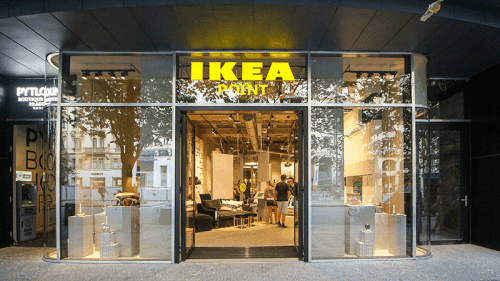According to U.S. Census data, consumers are now spending more of their food dollars at restaurants and bars than at grocery stores. They also spend an estimated 40 minutes per week grocery shopping, adding up to more than two full days a year weaving through produce aisles and waiting in line for the deli or to check out. And that does not include the actual time spent cooking and cleaning before and after the meal.
“Time-crunched consumers are changing the way grocers are thinking about their stores’ formats and products. And luckily, grocers’ small shifts to improve convenience through technology and prepared meals haven’t compromised quality,” said James Cook, director of retail research at JLL, as quoted in the firm’s latest Grocery Tracker. Cook also noted that 2016 was an above average year for openings, and 2017 may see slightly less activity.
Here are four trends making grocery stores an even more viable anchor for developments ranging from apartment buildings to malls to even hotels.
More Prepared Meals
Traditional grocers are becoming more like fast-food or casual-fresh restaurants with expanded prepared-food sections and buffets. But, traditional grocers are not the only ones capitalizing on the heightened convenience kick. Dollar stores like Dollar General and drugstores like CVS are getting into the consumables game by upping their product mixes with prepared salads and sandwiches, fresh produce, and frozen meals.
Reducing Time in Line
At least one global superstore recently added a new scan-and-go app that tallies your total as you shop—just pay at the front. While Kroger’s ClickList lets you order groceries online and pick them up in store, cutting down on shopping time, 365 by Whole Foods provides a more affordable price by employing fewer people at the counter and using interactive screens to order food. While you may not see iPads replace people in every grocery store in 2017, expect more and more grocers to experiment with mobile ordering technologies that link to curbside pickup or deliveries.
Everyone’s a Personal Chef
Meal kit delivery systems play right into consumers’ desire for convenience. With products like Blue Apron, Plated, HelloFresh, and Purple Carrot, shoppers can reduce trips to the traditional grocery store. But, meal kit delivery concepts are not going to put traditional grocery stores out of business. Rather, their increase in popularity signals a shift in the way consumers are prioritizing food shopping, and grocers are already taking note.
Openings Galore in the Golden and Lone Star States
In 2016, more than 440 grocery stores opened in the United States, adding 18.8 million square feet (1.7 million sq m) of space. JLL found that 27 percent of new grocery stores opened in Texas and California. By comparison, the next three largest states in terms of new space were North Carolina, Virginia, and New Jersey, which each accounted for just 5 percent of total space delivered in 2016. Aldi and Grocery Outlet dominated California, while Kroger and H-E-B continued their push into the Texas market. Overall, Aldi and Whole Foods were the biggest movers in the sector, opening the most stores by count.
“In 2016, new grocery store openings were slightly above average, thanks to grocers expanding their presence in California and Texas,” Cook said. “I expect the number of new grocery stores opening their doors to be slightly less this year, but we will see an uptick again in 2018 as Lidl makes a strong push along the East Coast.”






